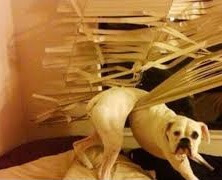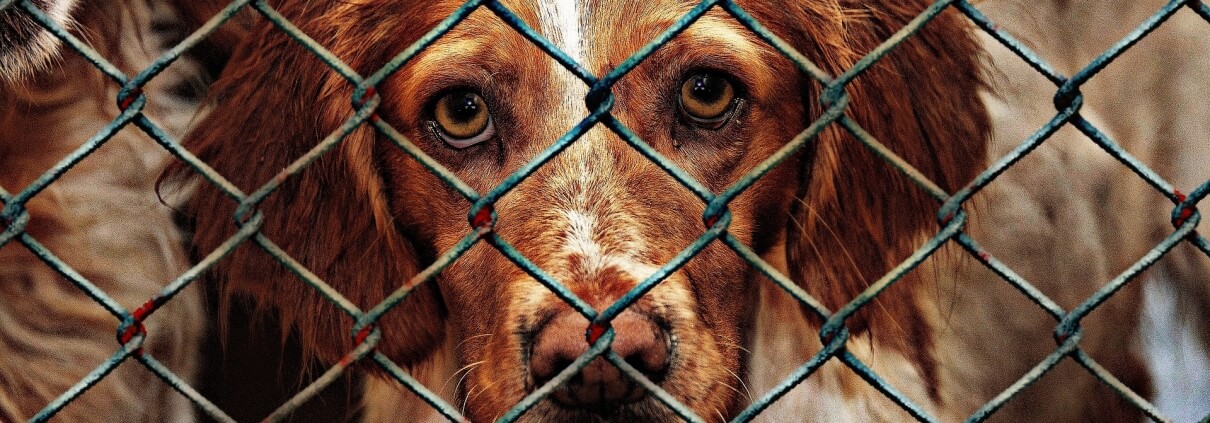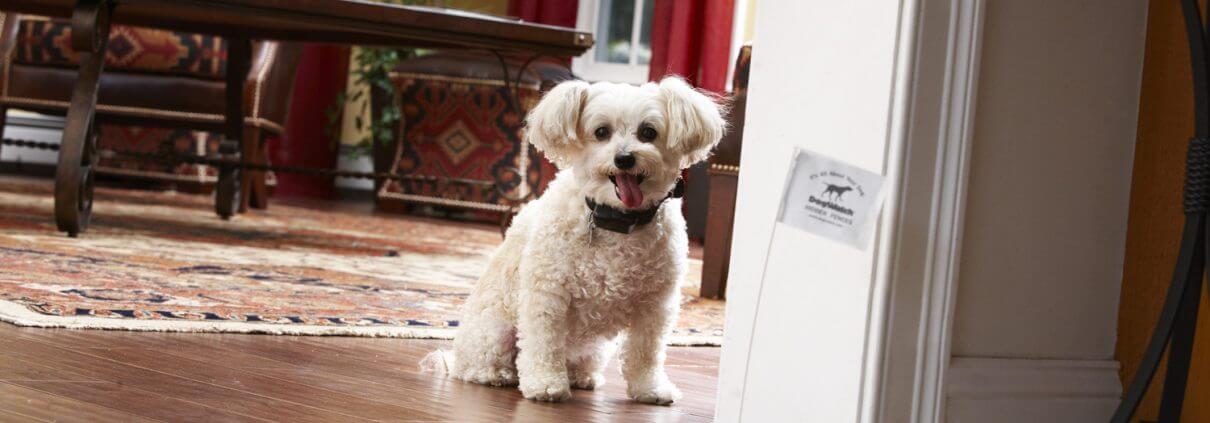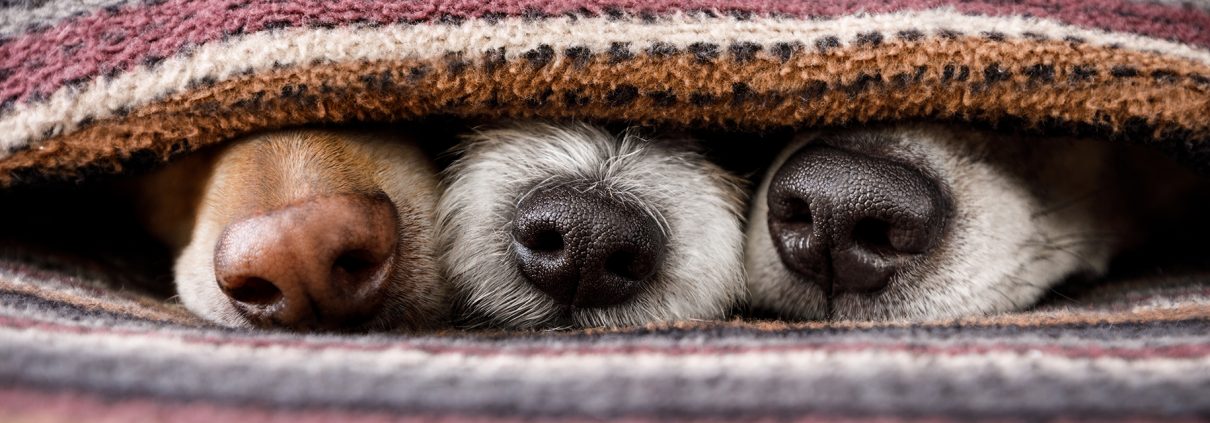Have you heard about an indoor dog fence?
An Indoor dog fence? Sounds interesting but what is it and how does it work? Actually, it’s not really a fence but a simple electronic aid to create “no go” zones in your home. Using a similar concept to outdoor dog fence our internal units offer flexibility and freedom. Rather than containing your pet to an area, you can exclude pets from certain rooms or places in the home.
Whilst you may be quite happy to share most spaces with your pet there may be some areas that you prefer to exclude him from. Rather than keeping your pet shut in the kitchen or utility room you can give them more freedom internally. For example, you may not want your dog or cat in your baby’s room or even going upstairs. You may want to keep your white sofa free of pet hair or keep exclude your pet from food preparation areas.
All this can be easily achieved by using one of our indoor dog fences. If you are already a dog fence customer then the indoor dog fence is the perfect add on to your outdoor system.
What is an indoor dog fence?
An indoor fence is very similar to the outdoor dog fence. It consists of a radio transmitter, a computer collar but does not necessarily require a boundary wire. At DogFence we offer two types of indoor units:
Portable Indoor dog fence: BOB is our completely portable indoor fence. The BOB is a circular transmitter that is rechargeable and requires no boundary wire. The unit sends out a small zone from the transmitter of up to 8ft in diameter. You can use to exclude pets from sofas or stop them. The size of the zone is adjustable to accommodate different areas for exclusion. The indoor dog fence is fully portable and has 3 settings to give up to 1 month of battery life.

BOB, the portable indoor unit.
Permanent Indoor dog fence: If you have an area that requires permanent exclusion then the IB200 is the perfect tool. This is unit is closely related to our outdoor dog fences as it requires a mains supply to power the unit. The IB200 needs to be plugged into with 8ft of where you require the transmitter or area to be excluded. The transmitter can run in wireless mode. So, just like the BOB, it can create a zone around the transmitter of up to 8ft or you can wire the transmitter to create larger exclusion areas. If you have not put down the floor coverings or have a cellar you use the wire to exclude pets from entire rooms.
How does the indoor unit work?
As with our outdoor dog fences the indoor fence sends out a coded radio signal. The signal is either sent through a boundary wire or from the base station itself. The size of the exclusion zone can be tailored to the area that it is covering. For example under a chair, you may only require a 2ft zone but for a staircase, this will need to be 3 – 5ft. The pet wears a computer collar. If you already have a DogFence outdoor dog fence then this will be the same collar. If you do not already use our system you will need to purchase a computer collar.
The collar is programmed to pick up the radio signal that is being sent out from the indoor dog fence. As with the outdoor dog fence if the pet approaches the “no go zone” the collar jumps into action. Firstly the collar will give out a high pitched warning beep to alert the pet. If the pet continues further the collar then gives out a static impulse (correction). The correction is set to each individual pet’s breed, age, and personality.
To aid the pet you small portable flags are used a visual. Actually, these flags are very similar to the outdoor dog fence training flags but smaller and portable. Once the pet is trained the flags are no longer required. The pet will react to the indoor dog fence is the same way as they do externally, they hear the beep and stop. Internal dog fence training usually only takes a couple of days.
Where can I use an Indoor Fence?
The most popular uses for an indoor dog fence are:
- Stop the pet going upstairs
- Exclude pets from certain rooms
- Keep pets off the worktops
- Keep Fido off the sofa
- Use in BBQ areas
- Keep pets away from Christmas Trees!
- Keep pets away from food storage areas.
Interestingly, the indoor dog fence is also used as part of our cat training protocol. Consequently, cats that are trained using the indoor fence adjust quickly and easily to the outdoor fence. By training internally is a safe and confined area we can be sure that the cat understands the concept of the warning beep and how to retreat.
Our indoor dog fences are a popular add-on to the outdoor fence. We have some owners that have several units. Both the BOB and the IB200 can be added on to your existing outdoor dog fence at any point in time. If you would like to know more about these units please call us on 01628 476475 or email info@dogfence.co.uk. For existing customers, you can order by phone or through our shop here.









